James Foster
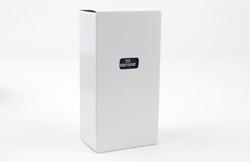
In my last lighter review and un-boxing, I spent some time comparing the Kiribi Pipe Lighter to the “im corona” Old Boy. So now it’s time to take a look at the “original,” so to speak, and take it for a spin. But first, if you have learned anything from my articles, it’s that I like to dig into a subject a little bit deeper, so lets talk a little about where this lighter came from.
Lighters in general are relatively new in the grand scheme of man playing with fire. The Modern flint lighters didn’t start making an appearance until around the turn of the century in 1900. Brands such as Dunhill, Zippo, Cartier, Visol, and Ronson appeared onward into the 1930s.
Until the Zippo made an appearance in the 1933 time frame, owning a lighter was more of a luxury item. Zippo made affordable lighters that everyone carried. In the 30’s and 40’s we began to see butane lighters emerge and become very popular as you no longer needed a wick, were able to control the flame, and there was less odor and smoke when compared to a wick lighter.
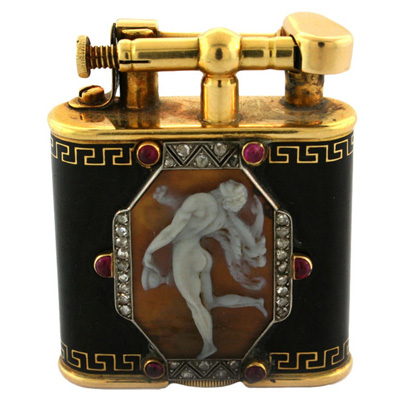
Where did the Old Boy Look Originate?
The iconic flip top or arm of the Old Boy lighter originates from the 1920’s art deco period, seen many times from the Dunhill corporation and first seen in 1923 with the Dunhill Unique. This was from a patent originally from Wise and Greenwood (Working for Dunhill) from 1919. Dunhill called the arm and cap a “Wick Cap”. Noted that the mechanism is the lift arm with horizontal flint tube. The first prototype was actually made from a mustard tin.
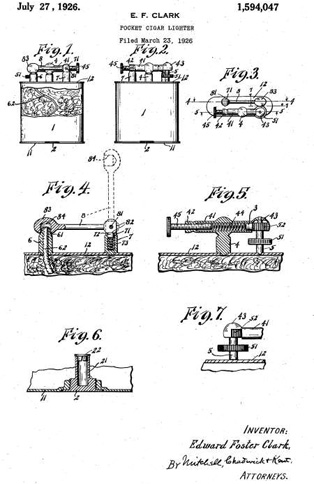
In the US the familiar “arm” is called the “Clark Lift Arm” and was patented in 1925 by Edward Foster Clark. (No relation that I can claim). Clark ceased production around WWII when brass rationing was imposed. Dunhill, on the other hand, continued production and introduced lighters with names like Tallboy 1933 (under Cartier’s license) and then the Broadboy in 1935. I suspect IM Corona was influenced by the styling and naming ideas of these.
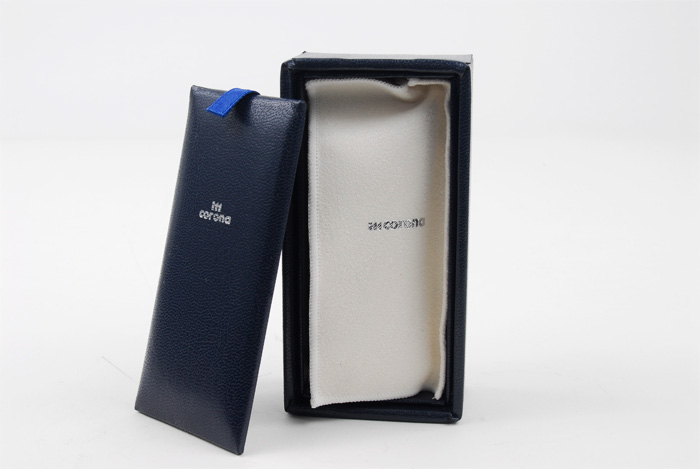
One thing you will notice, if you are not a Native Japanese speaker, is that finding out the history and more information about the brand “im corona” is a bit hard. I still went to the source and I chatted with Eisuke Fukashiro who is the Executive Officer of Fukashiro Corporation. What is the Fukashiro Company? They own the”im corona” Brand. In 2007 they acquired the trademark registration of “im corona” from former manufacturer, Ishiguro Kinzoku Kogyo.
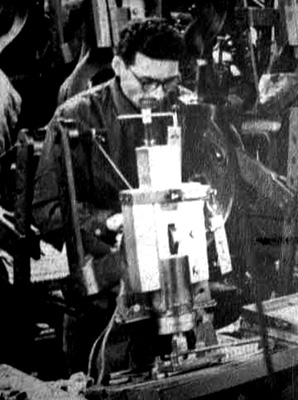
IM Corona was established as Corona in 1933 and was made up of several factories. One factory became JIS certified (Japanese Industry Standard) called Ishimitsu Kinzoku Kogyo. This factory was the first lighter factory to become certified. The quality lighters that came from the Ishimitsu factory were so good that the Ishimitsu factory established it’s own identity and became IM (I from Ishimitsu and M from Manufacturing) to distinguish this factory from the other corona factories.
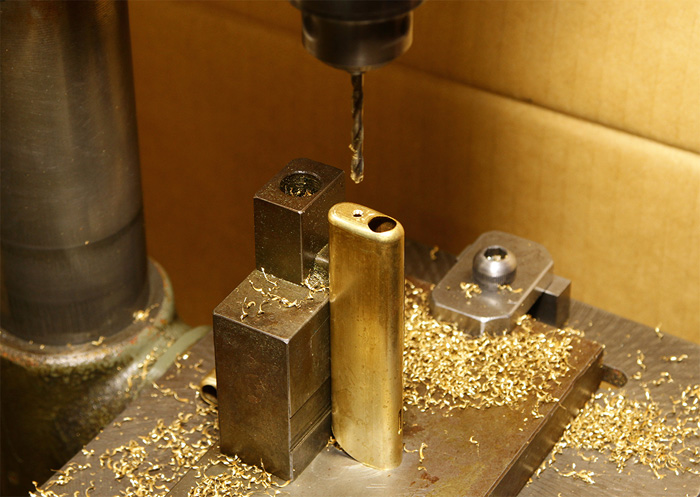
Fukashiro Corporation was founded in 1924 as the first Japanese wholesaler for specialized smoking accessories from Europe. They are also well-known as the first manufacturer of briar pipes in Japan. Since then, They have been engaged in domestic and overseas trading of various products such as smoking pipes, cigarette lighters, cigars and many other products. They also handle non-smoking items such as cufflinks, men’s accessories, stationary, grooming goods, bags, and leather goods.
When we think about what sort of craftsmanship goes into making these lighters, you can imagine the hours of labor spent, but I had no idea how much until Mr. Fukashiro told me. I did a double take.
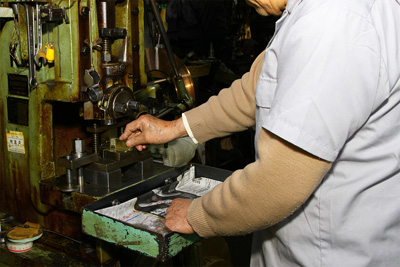
“There are more than 600 steps in the manufacturing process and more than one hundred parts and components that go into making the Im Corona Flint lighter,” said Mr. Fukashiro. “The IM Corona lighter is the fruit of efforts of Japanese manufacturers. It is produced very accurately even though it is one of the small parts and controlled each process properly by severe quality standards. The parts of im corona lighter (for example, O-ring, silicone, moltopren, etc.) are top quality. We use special silicon oil to cover the inner small parts and hardly change its quality as time goes by.”
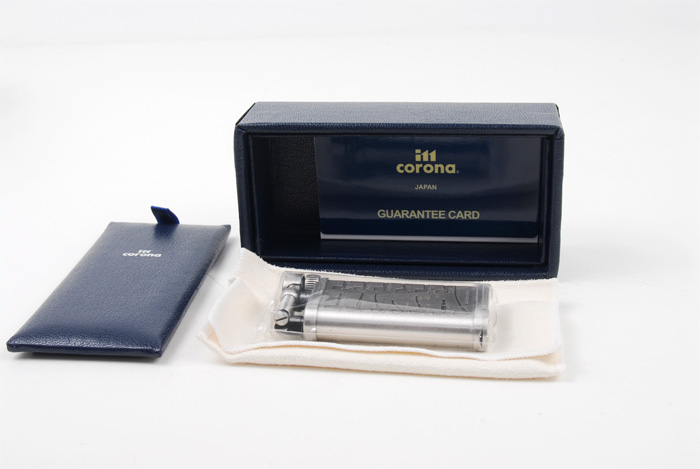
Un-boxing:
The first thing you will notice is the attention to detail on the packaging, The white box has a cut in it to reveal the “im corona” lettering on the blue box within it. A blue ribbon is at the top you gently pull to open the box and reveal a white cloth sleeve, warranty card and manual. I was able to find out that the exact butane capacity is 3.3g. It is one of the largest capacities for the pocket butane gas lighter with the exception of the Kiribi. It weighs 2.8oz out of the box and is heavier than the Kiribi lighter by a small amount. This is partly due to that solid brass tank, the heft gives it a more solid feel that is comfortable in the hand.
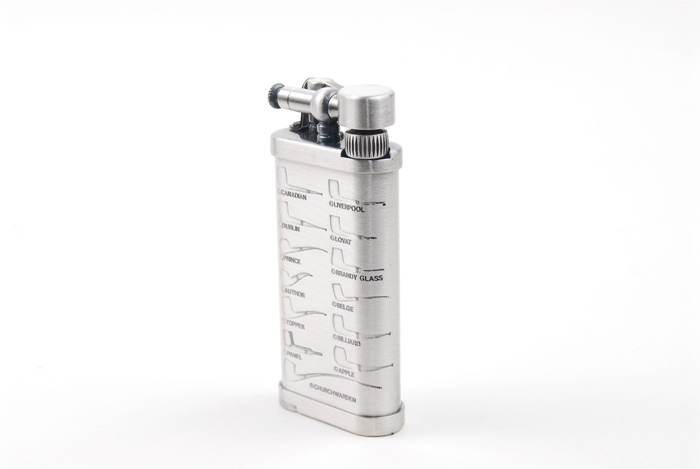
I decided to pick out the brushed pewter with pipe shapes lighter for my review and the price point for this one runs about $125 which puts it at the top of its class for this style of lighter, excluding Dunhill. As Mr Fukasio puts it, “Old Boy is expensive but not expensive. We believe that Old Boy gives them way more than they pay. We think that this is ‘Good cost performance.’ Today, “im corona” lighters are sold in approximately 30 countries and been popular in many pipe, cigar, and cigarette smokers.”
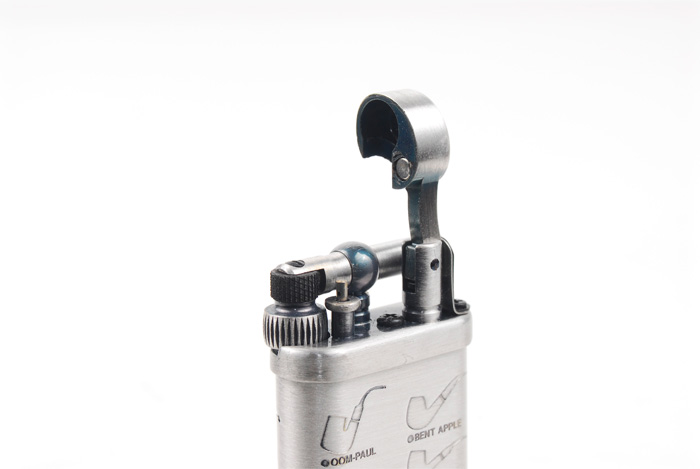
When lighting you will notice there is only one hole in the butane spigot, and you will also hear a faint hiss of butane as soon as you lift the arm up. Striking the flint, sparks fly and a beautiful flame shoots out that gives you precise control on where you want to light the tobacco in your bowl.
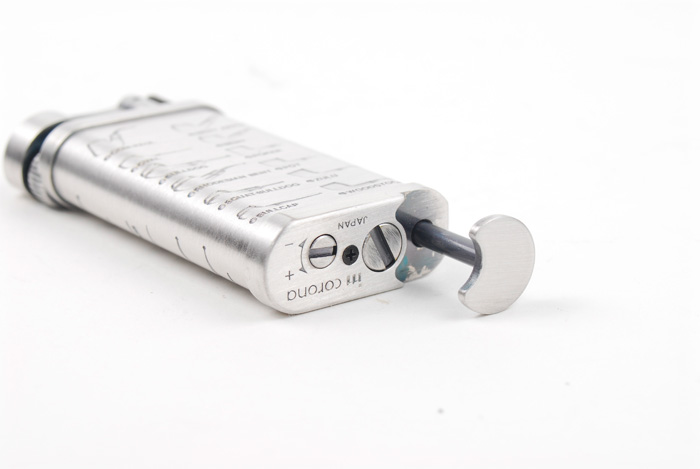
On the bottom of the lighter you will see the tamper that is inserted and runs the length of the lighter vertically. This tamper has 2 uses. One you’re able to use it as a regular tamper, and two you can use it as a screwdriver to adjust the flame settings and unscrew the cap that covers the butane valve. 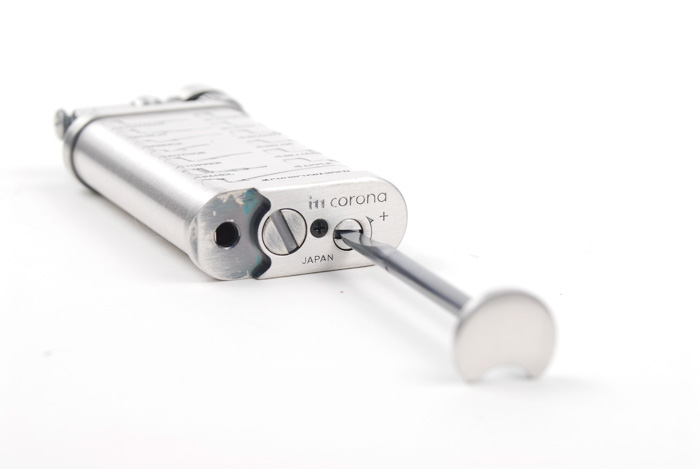
Of course the draw back is the tamper takes up space that could be used for more butane, but the amount is actually negligible. I’ve found the capacity to be totally fine and it lasts almost as long as the Kiribi. In the United States, the lighters have a 2 year manufacturer’s warranty for free repair or replacement if it cannot be repaired. After the warranty expires, there is a $9.00 fee for repairs.
In Summation I should mention that while IM Corona has been around since the 30’s, the Old Boy lighter actually was created in 1981 based on those original ideas and designs from the 1920s. I’d like to thank Mr. Fukashiro for taking the time to answer my questions and again msandoval for helping out with the great product shots.
 James Foster goes by the online handle of Pylorns in the forums, and he is the creator of an app for keeping track of your tobacco cellar inventory called The Pipe Tool and serves as the President of the Austin Pipe Club. |


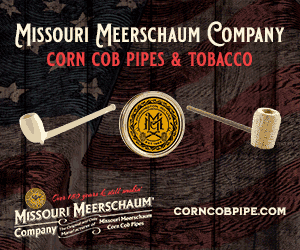












where or when will the app be available?
Great article! I’ve had my IM Corona Old Boy for two years now and I love it. It’s the only lighter I use.
It is indeed a fine lighter.
Thanks for the article.
I just received my Old Boy last week and love it!
nice pictures
Thanks for a great article revealing everything I’ve ever needed to know about this lighter. Wonderful illustrations too!
It is the standard by which I judge all others.
@bubbleheaddiver we’re in alpha testing right now. PM me.
The IM Corona Old Boy is the standard by which we judge all others. Just magnificent lighters.
IM Corona Old Boy lighters are the best money can buy…
I used an Old Boy for years before being gifted a Peterson lighter. While the Peterson pipe company might not be the manufacturer, it has their name and relevant picture. Well, it does not have a tamper lodged within, but has the same kind of mechanism that the Old Boy does and most importantly, it carries an ENORMOUS amount of butane. It seems to never run out, and that is because it is a bit larger than the Old Boy and doesn’t waste space for the internal tamper.
It is easy on flints–I think better than the Old Boy and is as reliable. I must also say that the tamper I use is a Languoile, which is a heck of a lot better than the Old Boy internal one, though it is a bit less handy.